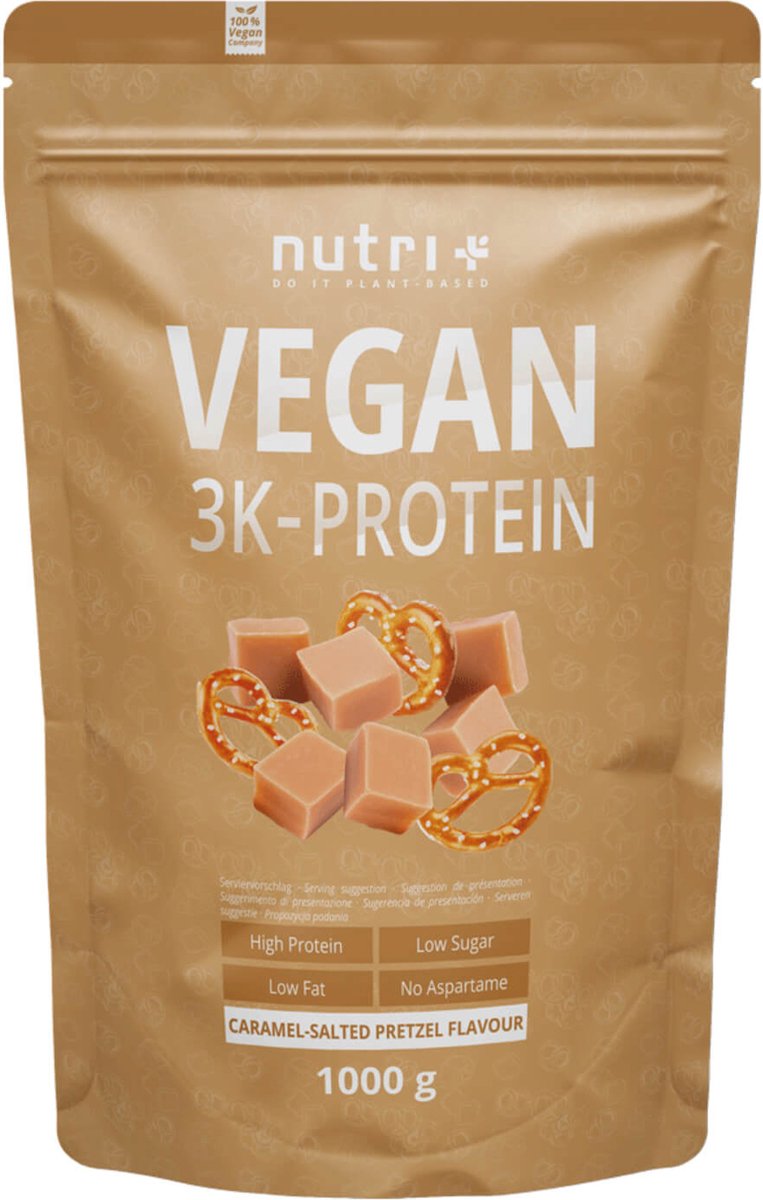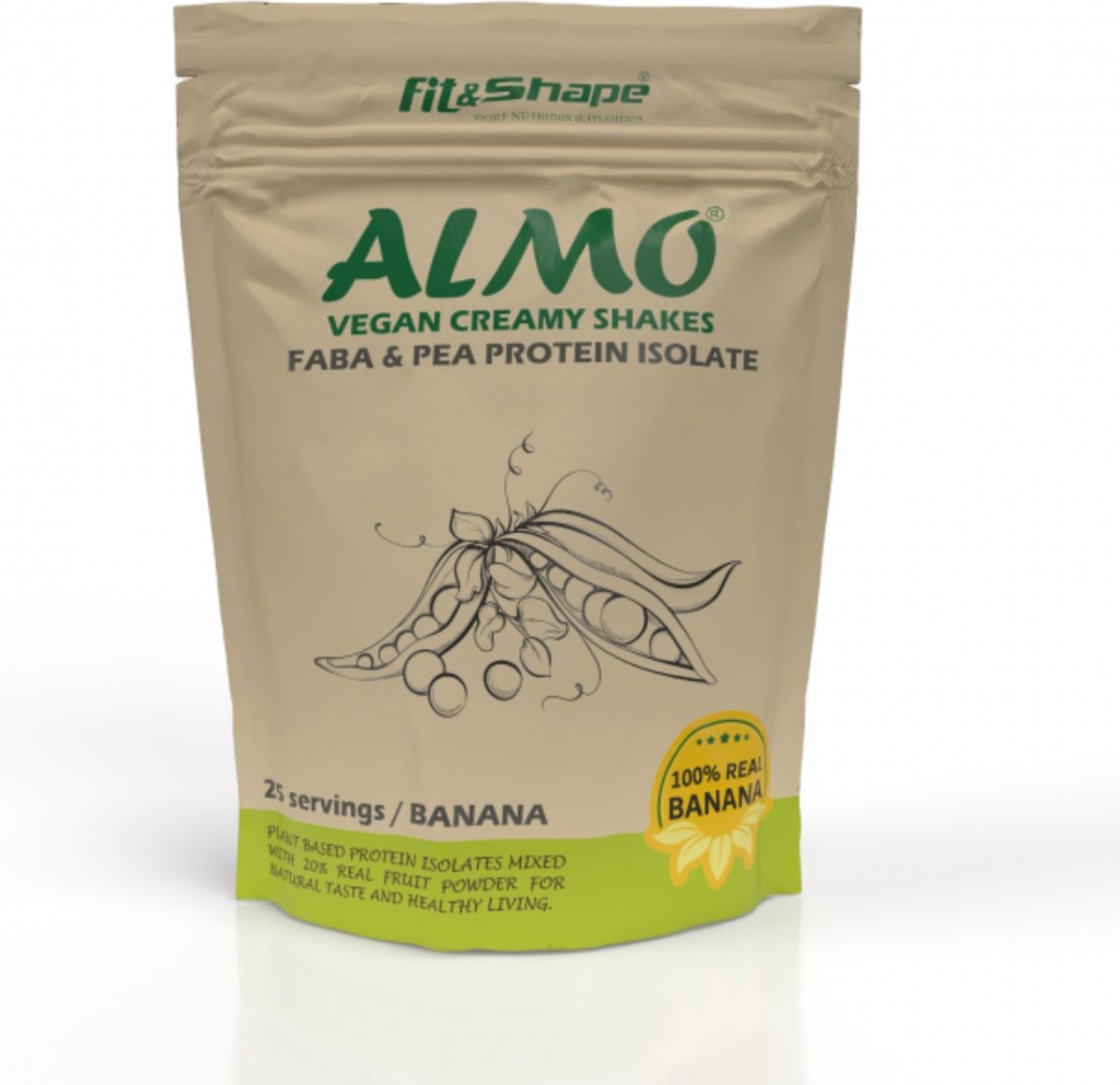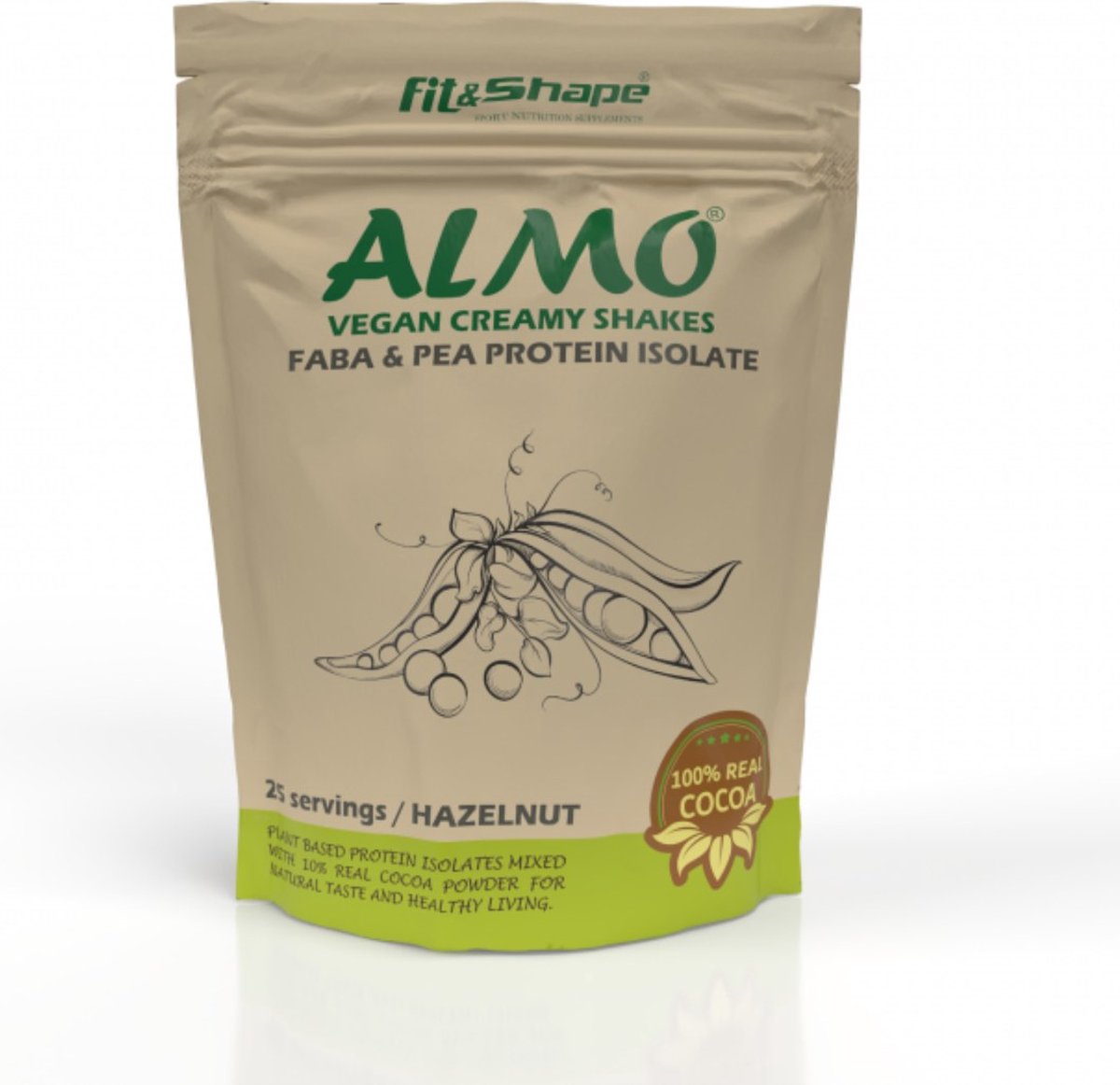Recognize the signs and discover what suits you
Not everyone reacts the same to cow's milk. Where some people tolerate a cappuccino or cheese toast just fine, others get tummy trouble, skin complaints or fog in the head. In this blog, we walk through the most common symptoms of cow's milk intolerance along, how they can arise, how to recognize them in your daily life and what you can do today.
Note: I try to do as much research as possible, so you don't have to and find everything collected in one place. I am not a doctor and do not give medical advice. When in doubt, always consult with your doctor or dietitian.

What exactly is cow's milk intolerance
At cow's milk intolerance does your body react sensitively to components from cow's milk, usually the milk proteins such as casein and whey protein. It is not an allergy where your immune system immediately sounds the alarm. The reaction is more subtle and often delayed. This makes recognition more difficult and the symptoms more variable.
More basic reading: What is cow's milk intolerance and the distinction from allergy in What is the difference between cow's milk allergy and cow's milk intolerance.
In plain language
Cow's milk contains proteins, sugars, fats, vitamins and minerals. Some bodies especially like the proteins troublesome. You then get symptoms after milk, yogurt, cheese or products in which milk is hidden. Not right away, sometimes only hours or even a day later.
Symptoms by category
1. Abdomen and intestines
Many people recognize their belly first. You drink a latte and an hour later your tummy feels inflated, as if your pants were suddenly tighter. There may abdominal pain or cramping following, nagging or stinging around the navel, sometimes immediately after eating, sometimes later in the day. Relief varies, more frequent and softer one week, and more rigid the next. After creamy dishes such as cream sauce or ice cream is nausea a common signal.
- Bloating
Like your belly is suddenly filling up and your pants are tighter. - Abdominal pain or cramps
Stinging or nagging sensation, often in the lower left or around the navel. - Alternating stools
From softer and more frequent to just constipated. Sometimes alternating per week. - Nausea
Especially after creamy dishes such as cream sauce, cheese fondue or ice cream.
That's how you recognize the pattern: complaints after dairy and processed products with milk components. Tip: Record meals and symptoms in a simple diary.
Just in
-
nutri+ Vegan 3K Protein – Protein Powder Caramel Salted Pretzel – Vegan protein powder – with proteins from soy, peas, and sunflower – lactose-free and gluten-free – 1000 g
€ 30,55 -
Fit&Shape ALMO Plant-based Protein Powder (Flavor: banana) – Vegan Protein Shake – Vegan Protein Blend – Organic Pea & FABA Protein Isolate – 750 grams (25 shakes) including measuring scoop (Plant-based Protein – Vegan Protein – Plant-based Protein Powder)
€ 24,95 -
Fit&Shape ALMO Plant-based Protein Powder (natural) 82% protein percentage – Vegan Protein Shake – Vegan Protein Blend – Pea & FABA protein isolate – 750 grams (25 shakes) including measuring scoop (Plant-based Protein – Vegan Protein – Plant-based Protein Powder)
€ 24,95
2. Energy and head
Besides the belly, you often notice it in your energy and head. After a meal with dairy, your energy away and focusing is more difficult. Where you normally work through an hour, you now notice after 15 minutes that you are derived are. Some people link headache or migraine to days with more milk products, sometimes with a marked delay.
- Fatigue
Less energy after a meal with dairy. - Concentration problems
You wander off faster. - Headache or migraine
In some people, dairy products are an obvious trigger. Timing may be delayed.
3. Skin, mucous membranes & other signals
The skin can participate. Red, itchy spots flare up after days with lots of dairy. Others, on the other hand, see pimples around chin and jawline. Also mucous membranes react regularly. More snotty after cappuccinos or a feeling of phlegm in the throat after a cheesy meal is common. Finally, there are signs you don't recognize until later. Restless sleep or a short fuse after an evening of pizza and ice cream, for example. The pattern often becomes clearer if you follow it consciously for a few weeks.
- Skin rash or eczema-like appearance
Red, itchy spots that flare up after days with lots of dairy. - Pimples or acne
Especially around chin and jawline. - Stuffy nose or phlegm
Sometimes more snotty after cappuccinos or cheesy meals.

Important: these symptoms can also fit other things, such as lactose intolerance or cow's milk allergy. That's why it's smart to test specifically what's at you plays. See the roadmap: How to test whether or not you can tolerate cow's milk well.
How do these complaints arise
The core is often in milk proteins. Your digestion and intestinal barrier react sensitively to it. That can cause local irritation and changes in the microbiome. The sum you notice in belly, skin and energy. More explanation of the proteins themselves can be found in: What are milk proteins.
In plain language
Think of your gut as a busy shopping street. Usually everyone walks through and it stays cozy. But when suddenly too many people with big bags come in at once, things get tight. The guard, or your intestinal barrier, touches irritable. That feels like bloating, cramps or just tired are.

The difference with lactose intolerance
At lactose intolerance do you respond to the sugar in milk, the lactose. Due to too little lactase that sugar is not broken down properly. In the colon, it goes yeasts and that especially gives gas, cramps, a bloated belly and sometimes diarrhea, often already within 30 to 120 minutes After eating or drinking. At cow's milk intolerance do you respond correctly to the protein in milk, the milk proteins such as casein and whey.
This is not a classic allergy, but a sensitivity reaction which is a broader complaint picture can give, such as abdominal discomfort plus fatigue, headache, skin complaints or concentration dip, and those complaints come regularly delayed set up, sometimes not until later in the day or the next morning.
In plain language
Lactose intolerance is a cutting problem in your small intestine. Cow's milk intolerance is a sensitivity problem for proteins.
Which products often cause complaints
The classics are fresh and creamy dairy products such as milk, cappuccino, cream, ice cream, cottage cheese and mascarpone. Also cheese plays into it. With cow's milk intolerance, any cow's milk cheese have a role, as the proteins remain present. Some people tolerate sheep or goats better, others do not. This is different with lactose intolerance, where especially fresh and young cheeses give complaints faster because there are even more lactose in it. A handy overview is in Which cheeses contain high or low levels of lactose.
The hidden dairy you easily forget. Stock cubes, cheese-flavored potato chips, sauces, cold cuts, cookies, bread, spice mixes and chocolate contain milk ingredients more often than you think. With Check the ingredient list. learn to read labels like a pro.
- Fresh and creamy dairy: milk, cappuccino, cream, ice cream, cottage cheese, mascarpone.
- Cow's milk cheese: all cheeses that contain cow's milk.
- Hidden dairy: stock cubes, cheese-flavored chips, sauces, cold cuts, cookies, bread, spice mixes, chocolate.
In plain language
Sometimes milk clogged. In that case, the link to complaints is less obvious. That is why read labels really.

How to discover if your symptoms fit cow's milk intolerance
The most reliable route is structured testing. Start with a rest period in which you omit cow's milk and obvious lactose sources until your tummy feels calm again. After that, test one variable at a time. Would you like to know if lactose is the trigger, choose a small serving with lactose without cow's milk protein, for example goat or sheep. Would you like to milk protein testing, choose something with lactose-free cow's milk. Note time, serving and complaints until the next day. This way you keep your test pure and you can compare fairly. The detailed explanation can be found: How to test whether or not you can tolerate cow's milk well.
In plain language
Test pure so you know what triggers you: first the sugar, then the protein. Or the other way around. Not everything mixed together. Then you can choose purposefully what fits.
Common misconceptions explained
A common thought is that lactose-free is the same as cow's milk free. It doesn't. Lactose-free says something about the sugar, the proteins stay. Also, you often hear that all cheese is a problem in everyone. Indeed, cow's milk intolerance involves the proteins and any cow's milk cheese can participate. At lactose intolerance it is more nuanced. Aged hard cheeses often contain hardly any lactose and are better tolerated by many people. Furthermore vegetable not automatically healthier. It is cow's milk free and lactose free, but always look for nutritional value and additions. In conclusion: lactic acid sounds like milk but is usually lactic acid Of plant or microbial origin and contains no milk protein or lactose.

When to see a family doctor
Make an appointment if complaints fierce his or persist, if you unintentional waste, if you blood or mucus in the stool or if you see hesitates between allergy and intolerance. With children, low-threshold advice is always wise. For orientation helps: What is the difference between cow's milk allergy and cow's milk intolerance.
- Severe or persistent symptoms.
- Unintentional weight loss, blood or mucus in the stool.
- Doubt between allergy and intolerance.
- With children (or for yourself), you can also always seek low-level advice.
Further reading on NooMooo:
- What is cow's milk intolerance
- What is the difference between lactose intolerance and cow's milk intolerance
- What is lactose intolerance
- What does lactase do
- Check the ingredient list
- Which cheeses contain high or low levels of lactose
Note: this blog is informational. I am not a doctor and do not give medical advice. If in doubt, contact your doctor or dietician.




Your reading tip for now
Blog Lactose
What is lactose intolerance?
Everything you want to know about this common complaint You eat a piece of milk chocolate or...
May
Recipes
Creamy pasta with cashew cream and spinach
Creamy pasta with cashew cream and spinach This pasta is so creamy that no one will find the cow's milk...
Sep
Blog Cow's Milk
Cow milk-free diet when breastfeeding: here's how to do it smartly
Your baby is breastfed and has symptoms in which cow's milk may be a factor. You want...
Sep
Blog Lactose
Is there lactose in egg?
The short answer is no You're standing in the kitchen, breaking an egg over the...
Aug
Blog Cow's Milk
Cow's milk intolerance Symptoms
Recognize the signs and find out what suits you Not everyone reacts the same to cow's milk....
Aug
Blog Lactose
Is ghee lactose-free? Clear explanation
Ghee, often called clarified butter in Dutch and known internationally as clarified butter, has...
Sep